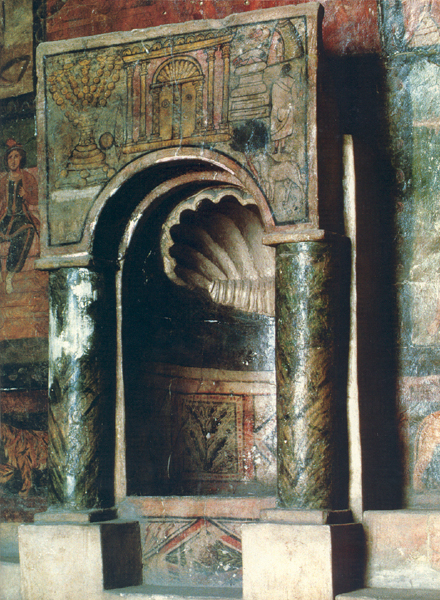Image Details

Department of Antiquities, Syria
The Torah niche at Dura-Europos, in a third-century C.E. synagogue excavated in modern day Syria. Surrounding this central focus are paintings of Jewish symbols and biblical scenes in tempera on dry plaster smoothed over mud-brick walls. Three common ritual objects are depicted above the niche, at left—a seven-branched menorah, or candelabrum, and an etrog (citron) and lulav (palm branch) used on the festival of Sukkot (tabernacles). At center is a representation of the Temple facade in Jerusalem. Added to these familiar objects is an unusual element—the Akedah, or binding of Isaac (at right). In Christian tradition this event is referred to as “the sacrifice of Isaac.”
The painting of the Akedah shows Abraham standing with the knife. Isaac lies on an altar above his father. According to Genesis 22:11–12, just before the blade drops, an angel calls out and tells Abraham to stop because he has demonstrated his faith in God. In the painting, this voice is depicted by God’s hand, which reaches out of a cloud at the top of the scene. To the right of this gesture is a tent with a figure in the doorway, possibly Abraham’s wife, Sarah. At the bottom of the scene, above the column, stands the ram.
